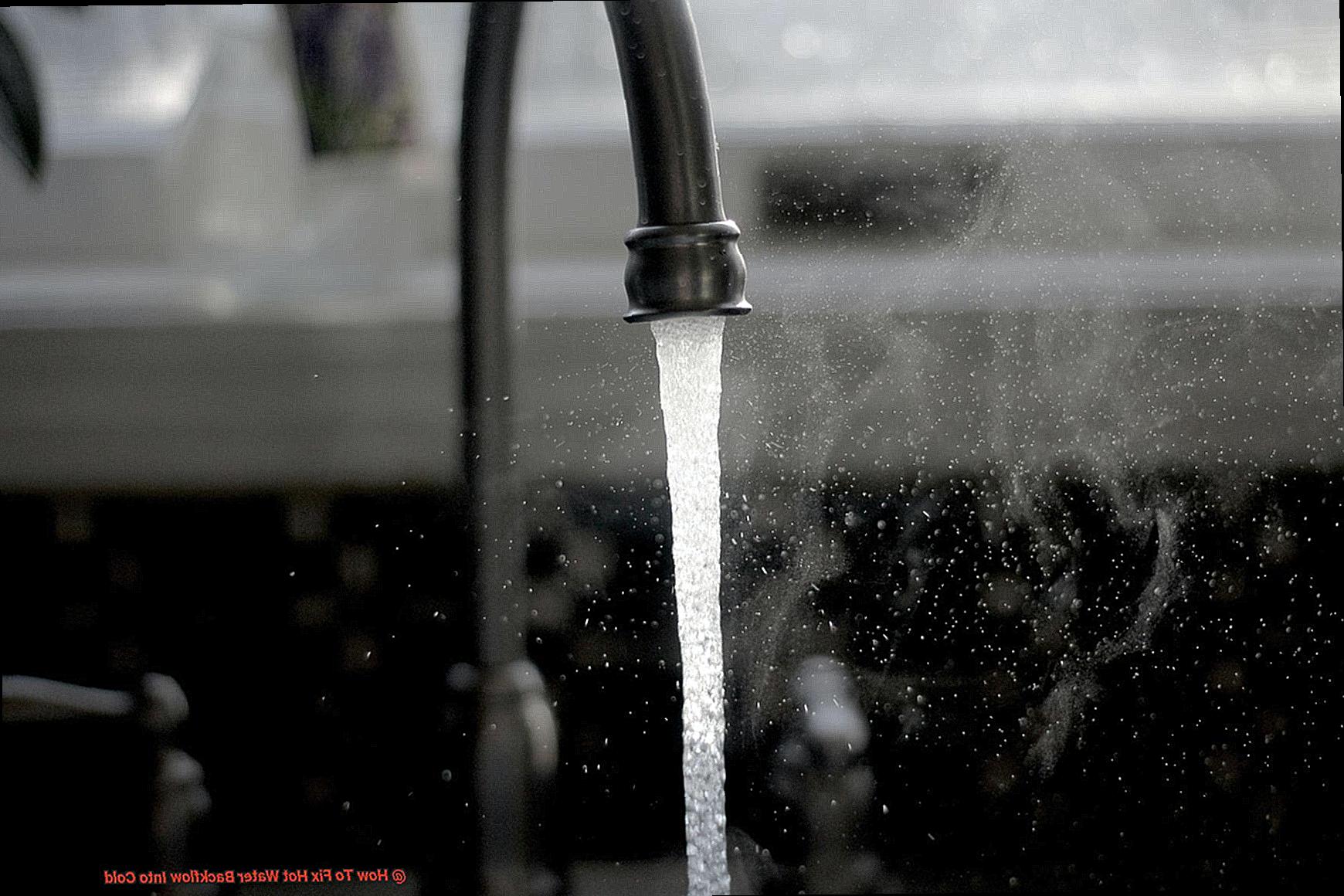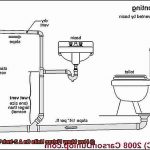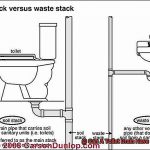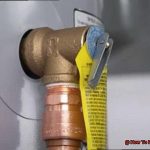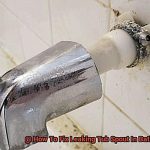Do you dread turning on the cold water faucet, only to be met with a blast of scorching hot water? Or have you ever experienced the aggravating problem of hot water infiltrating your cold water supply, leaving you with tepid or even warm water when you crave a refreshing gulp? If so, don’t fret. Hot water backflow into cold is a widespread plumbing issue that has numerous causes, such as malfunctioning check valves, incorrect plumbing installations, or high-pressure water.
Thankfully, there are several solutions available to fix hot water backflow into cold and restore your water supply to its proper temperature. In this blog post, we’ll delve into the underlying reasons for hot water backflow into cold and provide step-by-step instructions for remedying the situation. From examining and replacing check valves to adjusting your temperature and pressure settings, we’ll cover everything you need to know to get your plumbing system functioning correctly and prevent future occurrences of hot water backflow.
So, let’s get started.
Contents
Causes of Hot Water Backflow Into Cold
Hot water backflow into cold water is a common problem that plagues many homeowners. Luckily, understanding the potential causes can help you identify the issue and find a suitable solution.
The first suspect in hot water backflow is often a faulty check valve. This vital component ensures that water flows in one direction only, preventing any backflow. If the check valve fails, hot water may start flowing back into the cold water line, mixing with your cold water supply.
Another possible culprit is a malfunctioning pressure regulator. This component maintains consistent water pressure throughout the house. If it fails, it can cause an increase in pressure in the hot water line, leading to hot water flowing back into the cold water line.
A third potential cause of hot water backflow is cross-connections between the hot and cold lines. These issues can occur due to breaks in pipes or incorrect installation, allowing hot water to mix with your cold water supply.
It’s important to note that hot water backflow can also be a symptom of more significant plumbing issues like blockages or leaks. If you suspect that you have a larger problem at hand, it’s best to seek professional plumbing assistance.
Identifying the root cause of hot water backflow is essential for finding a suitable solution. Whether it’s a faulty check valve, malfunctioning pressure regulator, cross-connections, or more significant plumbing issues, understanding the potential causes can help homeowners keep their plumbing system running smoothly and safely.
Potential Dangers of Hot Water Backflow Into Cold
Not only can it cause damage to your plumbing fixtures and appliances, but it also poses a threat to your health and safety. In this article, we’ll delve deeper into the potential dangers of hot water backflow into cold water and provide tips on how to prevent it from happening in your home.
The most significant risk of hot water backflow into cold water is scalding. When hot water flows back into the cold water pipes, it can mix with the cold water and create dangerously hot water at the tap. This can lead to burns or scalds, especially for young children or elderly individuals who may have more sensitive skin. To avoid this danger, it’s important to ensure that your plumbing system is properly maintained, and there are no faulty valves or pressure regulators causing backflow. Don’t let a preventable accident ruin your day – make sure that your plumbing system is functioning properly.
Another potential danger of hot water backflow into cold water is bacterial growth. Hot water tanks are typically kept at a higher temperature than cold water tanks to prevent bacterial growth. However, if hot water flows back into the cold water lines, it can contaminate the cold water supply and increase the risk of bacterial growth in the pipes. This can lead to health problems for you and your family. To avoid this danger, consider installing a backflow prevention device that will keep hot water from flowing back into the cold water lines. Keep your family healthy by being proactive about preventing bacterial growth.
In addition to scalding and bacterial growth, hot water backflow into cold water can also cause damage to plumbing fixtures and appliances. Hot water can damage seals and gaskets in faucets, showerheads, and other plumbing fixtures. It can also damage appliances such as washing machines and dishwashers that are designed to use only cold water. Don’t let preventable damage to your appliances and fixtures cost you money – make sure your plumbing system is well-maintained and any issues are addressed promptly.
To prevent hot water backflow into cold water, homeowners should take proactive measures. Regular maintenance of plumbing systems and appliances can help prevent issues that could lead to backflow. Installing a backflow prevention device can also be an effective solution for preventing hot water from flowing back into the cold water lines.
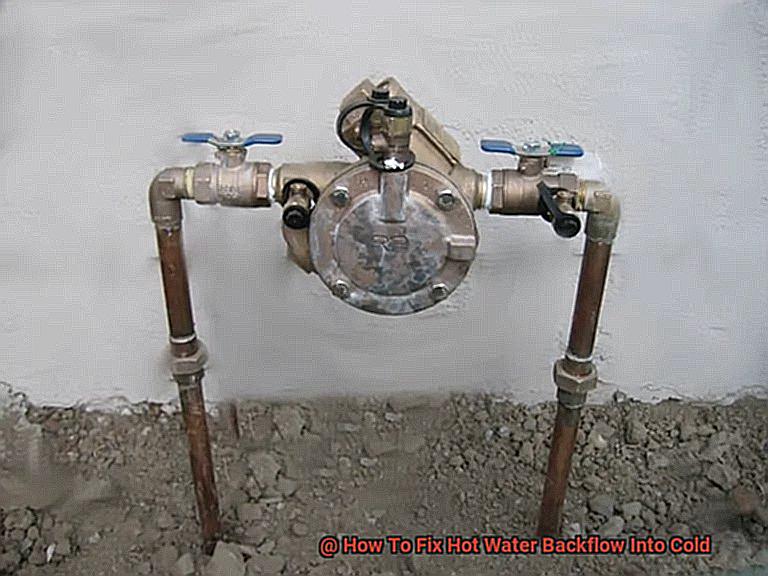
Prevention Methods for Hot Water Backflow Into Cold
It can cause discomfort, inconvenience, and even pose a health risk. Fortunately, there are effective prevention methods that can save you from this problem.
To begin with, ensure that the check valves are installed correctly and functioning properly. These valves allow water to flow in only one direction and prevent backflow. If the check valve is faulty, it needs to be replaced immediately.
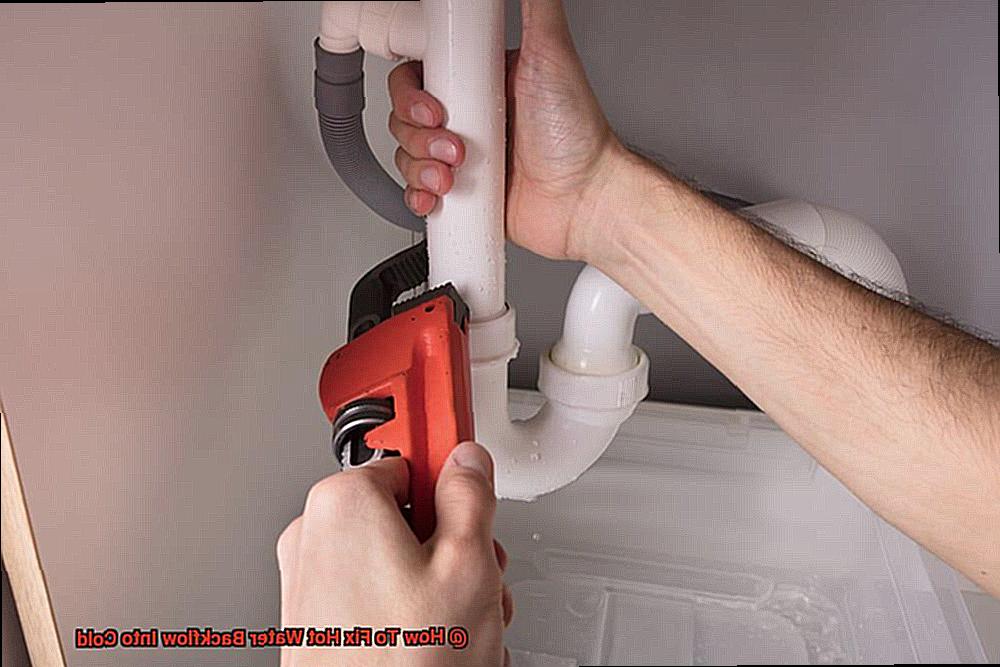
One of the leading causes of hot water backflow into cold pipes is high water pressure. Installing a pressure regulator can help regulate the water pressure and avoid backflow.
The expansion tank plays a vital role in regulating the water pressure in the pipes. A faulty expansion tank can cause hot water to backflow into cold pipes. Regular maintenance of the expansion tank can prevent this problem from occurring.
Another effective prevention method is installing an air gap, which physically separates the water supply from the outlet. This prevents any cross-connection between the hot and cold water pipes, effectively preventing backflow.
Regular plumbing inspections can help identify potential problems with your plumbing system before they become significant issues. An annual inspection by a professional plumber can ensure that all prevention methods are functional and effective.
By implementing these prevention methods, you can avoid hot water backflow into cold pipes and enjoy a safe and comfortable living environment for yourself and your family.
Installing an Anti-Siphon Valve
The solution is simple: install an anti-siphon valve. This device is crucial for preventing hot water backflow into cold water and can be easily installed on any fixture where there is a risk of siphoning, such as toilets, sinks, and outdoor spigots.
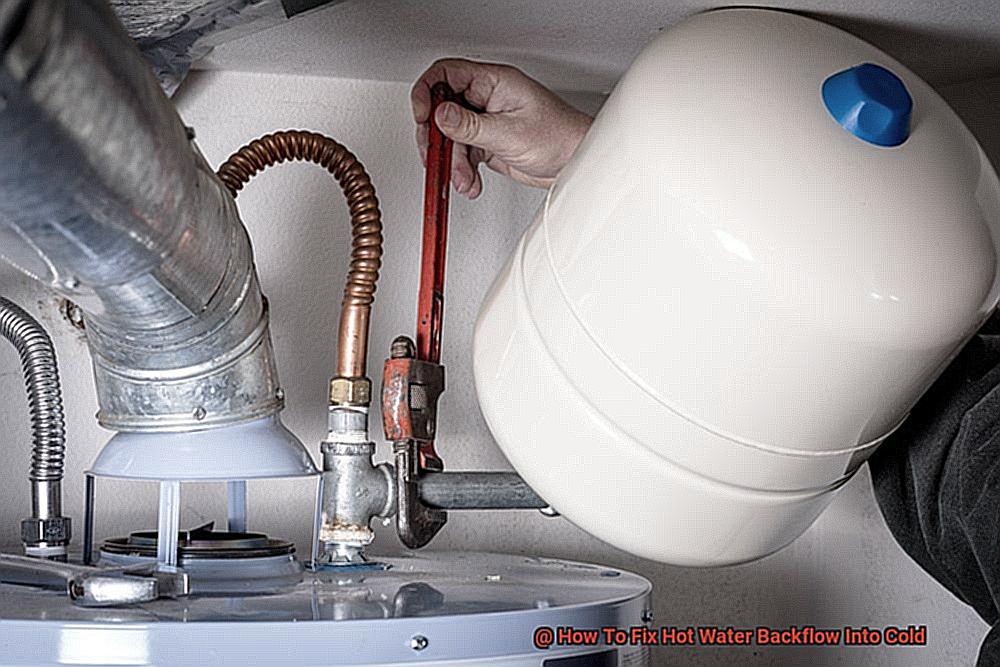
Here’s how to install an anti-siphon valve in five easy steps:
Step One: Turn Off the Water Supply
Before beginning the installation process, turn off the water supply to the affected fixture and drain any remaining water. This will ensure a smooth and hassle-free installation process.
Step Two: Remove the Existing Faucet or Valve
To install the anti-siphon valve, remove the existing faucet or valve carefully. Ensure that you follow the manufacturer’s instructions for installation, as some valves may require additional fittings or adjustments.
Step Three: Attach the Anti-Siphon Valve
Once you’ve removed the existing faucet or valve, attach the anti-siphon valve in its place. Make sure to follow the installation instructions meticulously to avoid any errors.
Step Four: Test for Leaks
After installing the anti-siphon valve, test it by turning on the water supply and checking for any leaks. You can also determine its effectiveness by filling a bucket with water and pouring it down the drain. The valve should prevent any backflow of water into the clean water supply.
Step Five: Regular Maintenance
It’s vital to note that anti-siphon valves need regular maintenance to ensure proper functioning. Check periodically for any signs of damage or wear and tear and replace it if necessary.
So, installing an anti-siphon valve is an effective solution for preventing hot water backflow into cold water. With these simple steps, you can guarantee that your water supply remains safe and healthy for you and your loved ones.
Installing a Check Valve
Fear not, because installing a check valve is a simple and effective solution that can save you time, money, and most importantly, ensure a safe and healthy water supply for you and your loved ones.
A check valve is a one-way valve that only allows water to flow in one direction. By installing a check valve in the cold water line, you can easily prevent hot water from flowing back into the cold water line. But, how do you install it?
Firstly, locate the main cold water line that feeds into the water heater. Before starting any installation work, turn off the main water supply. Next, cut the cold water line using a pipe cutter or hacksaw. Remember to make a clean cut for a stronger connection.
Now it’s time to install the check valve in-line with the cold water pipe. Ensure that the arrow on the check valve points towards the water heater to guarantee proper flow direction. You can then connect the check valve to the cold water line using compression fittings or soldering. Make sure all connections are secure and leak-free before turning on the main water supply.
Once everything is connected securely, it’s time to turn on the main water supply and let it run for a few minutes to flush out any debris or air in the pipes. Congratulations. You’ve successfully installed a check valve to prevent hot water backflow.
But your job doesn’t end there. Regularly inspecting and maintaining your check valve is crucial to ensure it continues to function properly and prevent any potential issues with hot water backflow. By following these simple steps, you’re protecting your family’s health and safety.
Pressure Regulators as a Possible Solution
Look no further than pressure regulators, which are an effective solution for fixing this issue. These devices work by reducing the pressure of your incoming water supply, which helps prevent the mixing of hot and cold water streams.
But the benefits don’t stop there. Installing a pressure regulator can also extend the lifespan of your plumbing system by minimizing damage caused by high water pressure, such as leaks and other issues. Additionally, a pressure regulator can promote more efficient water usage, which translates to savings on your utility bills over time.
It’s important to note that pressure regulators may not always be the perfect solution for fixing hot water backflow. Other factors such as faulty valves or plumbing issues may also contribute to the problem.
However, installing a pressure regulator near your main water supply line or at the point of entry to your building is a good first step in addressing the issue.
Professional Plumber Assistance
While it may seem like a minor inconvenience, this issue can actually pose a threat to your family’s health and safety. As an expert in the field of plumbing, I highly recommend seeking professional plumber assistance to properly diagnose and fix the issue.
A licensed plumber has the necessary expertise and equipment to accurately identify the problem. They can determine if the issue is within your plumbing system or if there is a malfunctioning valve or fixture causing the backflow. In some cases, a backflow prevention device may need to be installed to prevent future occurrences.
Attempting to fix this problem on your own can lead to further damage and costs. It’s always best to leave it to the professionals to avoid any costly mistakes. Trust me, I’ve seen it all.
When choosing a plumber, it’s important to do your research. Look for someone who is reputable and experienced by checking online reviews or asking for referrals from friends and family. Obtaining multiple quotes can also help you compare costs and ensure fair pricing.
lEWoMzmMqkg” >
Conclusion
Hot water backflow into cold water is no laughing matter. It’s a pesky plumbing problem that can cause discomfort, inconvenience and even pose health risks to you and your loved ones.
The issue arises when hot water flows backward into the cold water line due to a drop in pressure or a faulty check valve. But don’t fret. There are several solutions available to fix this issue and restore your water supply to its proper temperature.
From replacing check valves to adjusting temperature and pressure settings, we’ve got you covered with everything you need to know about fixing hot water backflow into cold. Identifying the root cause of the problem is crucial for finding a suitable solution.
Whether it’s a faulty check valve, malfunctioning pressure regulator or cross-connections, understanding potential causes will help keep your plumbing system running smoothly and safely.
Prevention is always better than cure, so regular maintenance of plumbing systems and appliances, installing an anti-siphon valve or air gap, and annual inspections by professional plumbers can help avoid potential problems before they become significant issues.
If you’re experiencing this issue or suspect that you have a larger problem at hand, seeking professional plumber assistance is highly recommended. By following these tips and solutions, you can ensure a safe and comfortable living environment for yourself and your family.

